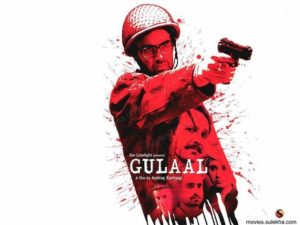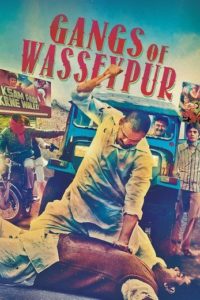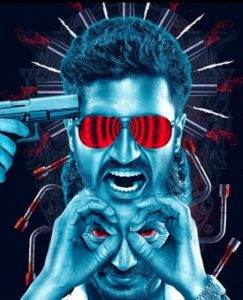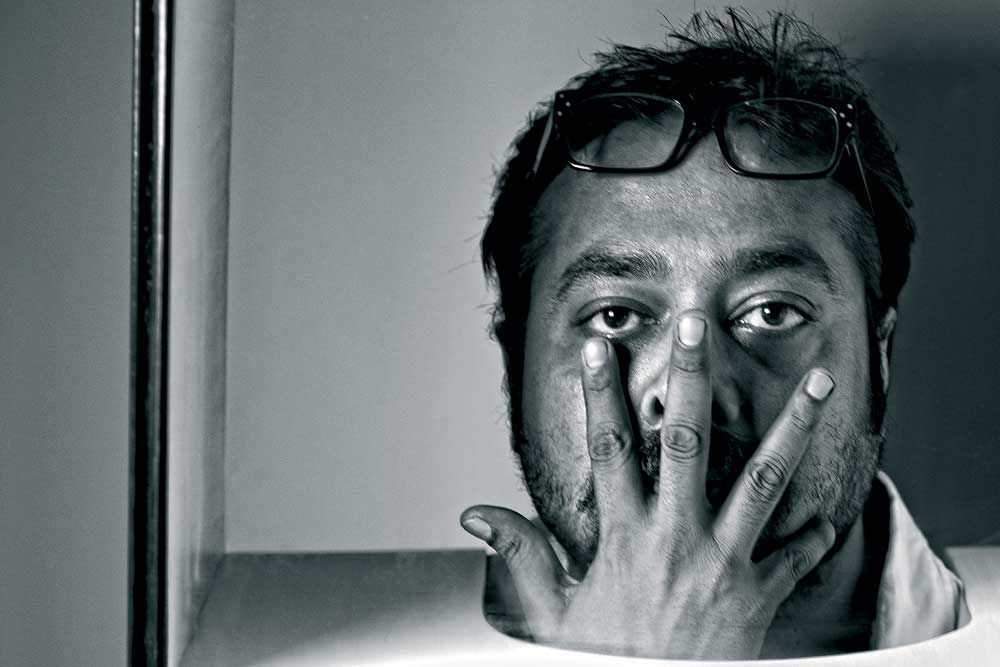Anurag Kashyap is undoubtedly one of the most talented directors in Indian cinema. His films are remarkable for their blunt portrayal of the realities that lie behind the curtain of Indian society. Kashyap often takes his cue from real life incidents and perhaps that’s the reason why his films reflect a familiar background of lifestyle, which the viewer may find very relatable. The director often employs the ‘flashback’ technique in order to emphasize upon the history of a subject, like the motivations behind a character’s political or personal outlook and so on.
Let’s look at some of his most acclaimed films that have placed him amongst the pioneers of a New Wave in Indian Cinema.
Black Friday (2004)
 Kashyap’s ‘Black Friday’ is based upon the book of the same name by Hussain Zaidi. It revolves around the circumstances which led to the Bombay blasts of 1993. Its release was stalled for two years before being finally released in 2007. Similar to a novel, Kashyap moves the narrative in a chapter-like fashion. Kashyap highlights the deeply ingrained animosity between the Hindus and Muslims, with the sensitive issue of the Babari Masjid at the heart of it. What follows eventually, is Newton’s Third Law and the Chaos Theory.
Kashyap’s ‘Black Friday’ is based upon the book of the same name by Hussain Zaidi. It revolves around the circumstances which led to the Bombay blasts of 1993. Its release was stalled for two years before being finally released in 2007. Similar to a novel, Kashyap moves the narrative in a chapter-like fashion. Kashyap highlights the deeply ingrained animosity between the Hindus and Muslims, with the sensitive issue of the Babari Masjid at the heart of it. What follows eventually, is Newton’s Third Law and the Chaos Theory.
In an oblique way, Kashyap also tries to pose a question to the viewer about the true purpose of religion in modern times. The film is said to have influenced the British director, Danny Boyle, during the making of ‘Slumdog Millionaire‘.
Gulaal (2009)
 Youth politics, combined with Right Wing Extremism, in a plot driven by motivated characters constitute Kashyap’s yet another masterpiece, Gulaal. In each film by Kashyap, the cultural and social aspects of the ethnic communities of a given state is presented in the most authentic manner; reflected by the spoken language, customs, and sometimes, the political history of a state.
Youth politics, combined with Right Wing Extremism, in a plot driven by motivated characters constitute Kashyap’s yet another masterpiece, Gulaal. In each film by Kashyap, the cultural and social aspects of the ethnic communities of a given state is presented in the most authentic manner; reflected by the spoken language, customs, and sometimes, the political history of a state.
In Gulaal, the influence of Western culture in the lifestyle of the characters is most apparent. This could be observed in the film’s songs which are clearly sung in the emerging fusion language known as Hinglish. In nearly all his films, the presence of Western influence is conspicuous. In Gulaal too, one of the supporting characters, a singer, is a huge fan of John Lennon and composes his songs with a worldly outlook as against to the surrounding rigidity around him. Thus, Kashyap is also aware of a growing, modern India with an international outlook.
Gangs of Wasseypur Part 1 & 2 (2012)
 Gangs of Wasseypur is indisputably Kashyap’s masterpiece, almost having risen to a cult level status now. The plot is essentially a revenge drama, spanning almost 5 decades and revolving around the rivalry of two families; the Muslim family, led by Sardar Khan (and then, his sons) against Ramadhir Singh, the local (Hindu) leader. Here too, Kashyap displays his awareness about the real-life social dynamics between the two religious groups.
Gangs of Wasseypur is indisputably Kashyap’s masterpiece, almost having risen to a cult level status now. The plot is essentially a revenge drama, spanning almost 5 decades and revolving around the rivalry of two families; the Muslim family, led by Sardar Khan (and then, his sons) against Ramadhir Singh, the local (Hindu) leader. Here too, Kashyap displays his awareness about the real-life social dynamics between the two religious groups.
Across the narrative, the women characters play their assigned roles, as per the general conceptions of Indian society but only until their male counterparts don’t step out of the line. Still, they try to come to terms with a patriarchal society where their voice remains more or less unheard and unheeded.
The plot is driven mainly by political intrigues and selfish conceits along with some other subplots brewing in the background. The desire for power and revenge being the root causes of self-destruction is perhaps the film’s chief message.
The film, thus, is Kashyap’s Magnum opus and perhaps, one of the best films that were or will be made in Indian cinema.
Raman Raghav 2.0 (2016)
 In this 2016 psychological thriller flick, Kashyap tries to delve into the twisted mindset of a deranged individual and just how much one can threaten the social order around us. The basic premise is that of a serial killer on the loose, who is a psychologically disturbed individual.
In this 2016 psychological thriller flick, Kashyap tries to delve into the twisted mindset of a deranged individual and just how much one can threaten the social order around us. The basic premise is that of a serial killer on the loose, who is a psychologically disturbed individual.
There’s an enthralling moment at the very end of the film which serves a reminder that as much as the society influences an individual, he too, can do the same to the society around him.
You might Like: 8 Psychological Thrillers That You Should Not Miss
A Look at his Mastercraft
Another reason behind the enactment of such realistic incidents is Kashyap’s unusual style of capturing scenes i.e. he employs the technique of guerrilla filmmaking, a branch of cinematography in which the action is played out in public (when essential) and the scene is captured through cameras which are hidden from public view. This technique helps in capturing the natural, unrestrained expressions of the characters without their awareness of a focused camera being anywhere nearby. For instance, Raman Raghav 2.0 (2016) mostly takes place in the slum areas of Mumbai (where shooting across narrow streets is usually a difficult task due to the presence of large crowds) and in one such scene, Nawazuddin Siddiqui’s character is seen fleeing the cops where he is elegantly shot by the use of guerilla cinematography.
What Kashyap demands from his audience is their close attention to the details, as the plot moves forward. The director is also known for his subtlety, as he reveals the intentions of his characters by showcasing their actions (as well as their expressions) rather than presenting much detailed monologues or any lengthy explanations.
A consistent theme that appears across his films is that of the conflict between the desires of the individual and the dictates of (mainly Indian) society.
With each release, Kashyap faces stiff resistance from the CBFC (Central Board of Film Certification), which often demands the removal of such scenes which they consider to be ‘controversial’ or too ‘graphic’ to present to the Indian audience. The justification behind the CBFC’s stance is debatable but what comes as a fact from such incidents is that the director is unafraid of presenting his firm views about the Indian society.
At present, there seems to be nothing stopping Mr. Kashyap, for he has made true, bold films in the past and continues to do so with an unflinching passion. For his contributions to film, the Government of France awarded him the Ordre des Arts et des Lettres (Knight of the Order of Arts and Letters) in 2013.
His recently released film ‘Mukkabaaz’ also received worldwide critical acclaim. I recommend that you watch it, watch ALL of ’em.

